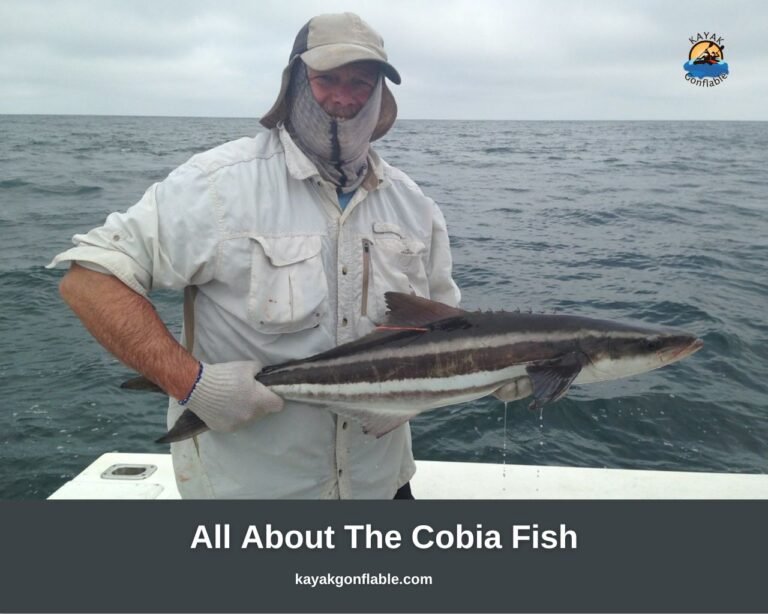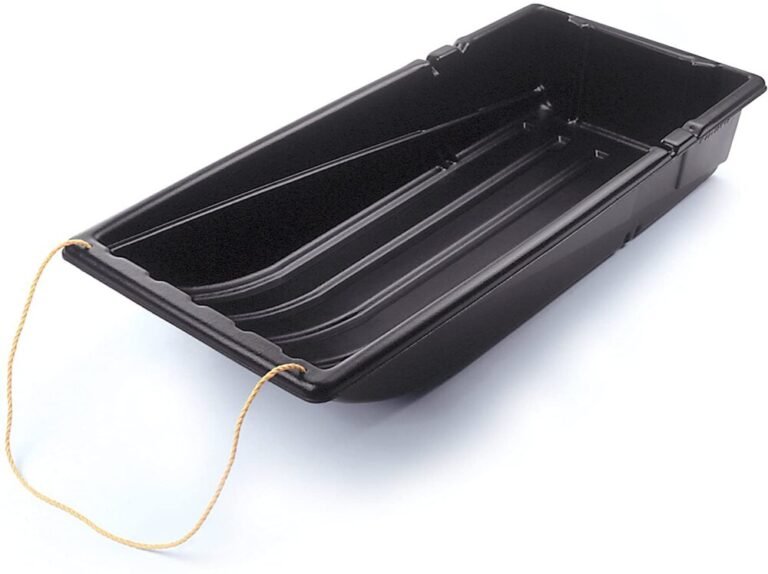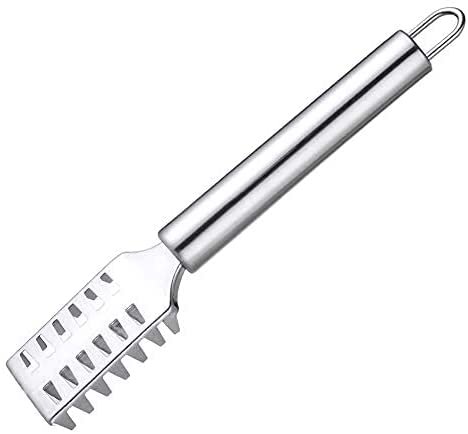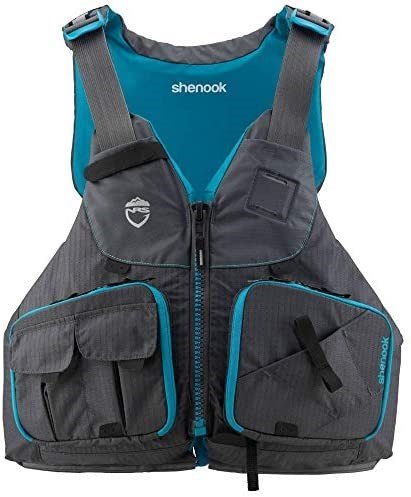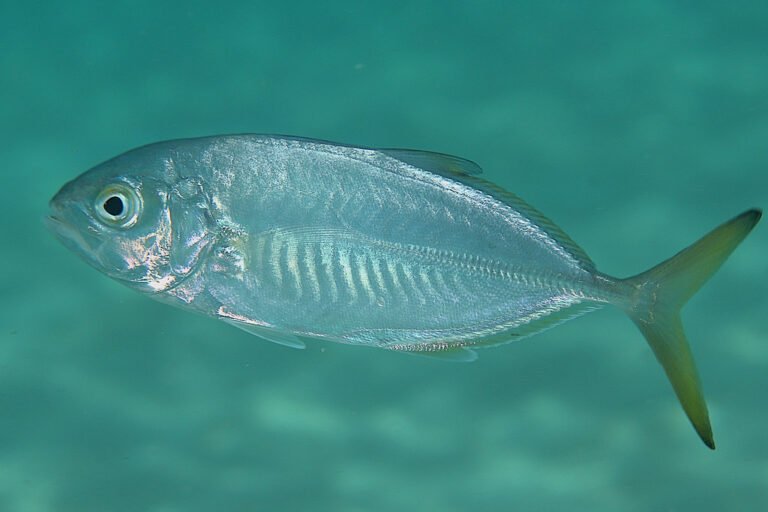Types of Fishing Lures: A Detailed Guide

When it comes to catching fish as quickly and painlessly as possible using artificial lures, it is important to get the best fishing lure possible. Fishing lures have an advantage overfishing baits in that they are one-time purchases that can be reused.
It is therefore important to put careful thought into getting fishing lures to have an enjoyable and productive fishing trip.
What are fishing lures?
Fishing lures are small, artificial objects that are hooked to a hook and tied to the end of a fishing line. They are generally designed like a fish’s prey. They’re used to draw fish to your fishing line.
Jigs, spinners, spoons, fly lures, crank-baits, and plugs are just a few of the various types of lures available. Some lure makers have even included LEDs in their designs.
Fishing lures are generally weighted and use a combination of movements, vibrations, colors, and shiny reflections to encourage fish to bite, whether they are made of rubber, plastic, metal, or a combination of these materials. Learn more about the top 10 fishing chairs on the market.
Advantages of Fishing Lures
- Reusable – Lures are one-time purchases that can be reused.
- Light – Lures don’t require specific storage like soil or water tanks, reducing the weight of your tackle box dramatically.
- Less messy – Lures are not messy and odorous like life baits.
- Fun – Shopping for lures can be fun. You get to enjoy the process of acquiring lures as well as using them.
- Specific – Using lures specific to a species of fish can make fishing more specific and reduce the catching of unwanted fish. Some lures are also less specific in that they can be used for more than one fish type.
- Reduced mortality rate – By avoiding deep hooking, which leads to greater fish death rates in catch-and-release fishing, lures can assist in raising the survival rate of fish.
- Population friendly – Anglers that utilize lures consume less bait, which helps to keep bait species populations from being overharvested.
Disadvantages of Fishing Lures
With so many different types of fishing lures available, it can take some trial and error to figure out which ones are ideal for the fish you’re after. As a result, your tackle box could become cluttered. Other drawbacks of fishing lures include:
- Irrespective of the fun garnered in the process of collection, they can easily become cluttered, especially if they don’t serve the intended purpose.
- Since they can’t wiggle their way out, lures easily get tangled in weeds, rocks, and other debris found underwater. For shallow, muddy waters, lures can be made ineffective, especially at night.
- Fishing lures work best in water bodies with a high density of fish. One of the reasons is that lures don’t give off smells like baits that attract fish from long distances. Lures have nice colors that can serve to attract fish nearby.
- Fishing lures require adequate skill to be effectively used and as such can make fishing especially challenging to a newbie.
To work well for the sort of fish you’re attempting to catch, lures require the appropriate mix of weight, hook sizes, and colors, so they’re not as simple as bait.
The sheer amount of possibilities might be intimidating for novices, which is why we’ve compiled a list of the top fifteen incredible fishing lures to help you out.
When Should You Use A Fishing Lure?
For better or worse, the effectiveness of lures is dependent on the appropriate set of circumstances. Lures are best used when:
- The water is very clear and refreshing
- The weather is warm
- Dealing with predatory, aggressive fish
- There are many undersized or non-target fishes in the area
- In a catch-and-release environment
- The bodies of water are designated as “artificial only” or “fly and lure only.”
How To Use A Fishing Lure
Using a fishing lure is a bit different from using a bait. One of the reasons for this is that lures are artificial and don’t have the lifelike natural movement of baits. So they have to be worked such that they appear as lifelike as possible to the prey.
Best All-In-One Fishing Lure Kit – The PLUSINNO Fishing Bait Set
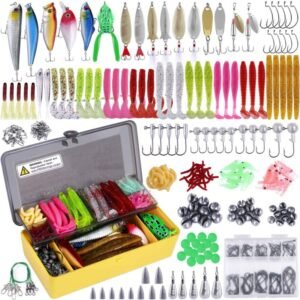
Types of Fishing Lures
The choice of fishing lure is a great determinant when it comes to how productive or futile a fishing trip will be. With the variety of fishing lures available, it is important to be aware of the most common ones and their characteristics. This will guide you and assist in tailoring a lure to your specific need.
Crankbaits
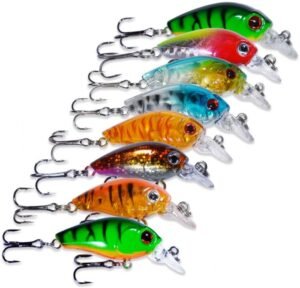
Crankbaits also known as plugs, can be used to mimic a lot of bait motions from diving to fleeing, to that of a wounded fish (bait). They are arguably one of the most popular artificial lures among anglers due to their diversity. They have two major parts – the lip and the body.
The lip is a metal or plastic sheet attached at an angle to the front (mouth) of the crankbaits. The angle of attachment determines the diving depth of the particular lure and swimming pattern.
The body is usually designed to mimic a particular species of fish. The shape, color, and design are such that they can take the place of the fish it is molded to mimic.
Crankbaits come in different sizes, shapes, and colors to mimic a wide range of fish species and are a good lure for beginners. The type of crankbait is determined by the species of fish you are fishing for.
Used for – all species
Jerkbaits
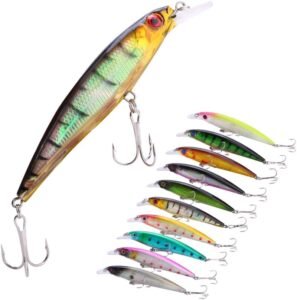
This lure bears similar characteristics to a crankbait but is slimmer than a crankbait. It is designed to be ‘jerked’ through the water mimicking the appearance of a wounded bait.
This is highly effective for fish species that like an easy feed. Jerkbaits come in a variety of sizes, shapes, colors, and designs.
Used for – northern pike, trout, crappie, bass, etc.
Swimbaits
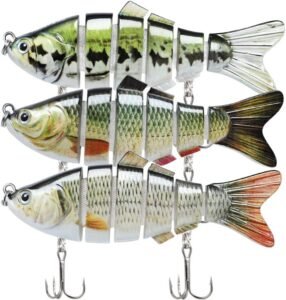
Swimbaits are lures that are designed to mimic the swimming pattern of a variety of fish. They swim like the fish that they look like making it difficult for predators to tell them apart from the natural fish itself.
The right fishing technique is important to get the precise swimming motion of the fish the bait is meant to imitate.
Used for – stripers, pike, pickerel, panfish, bass, etc.
Jigs
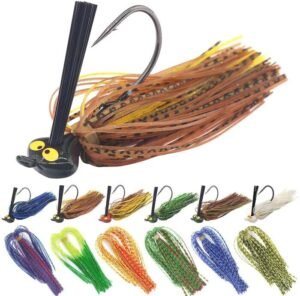
Jigs are ideal for bottom feeders since they have a weighted head which causes them to sink easily. This also makes it suitable in colder regions when the fish are sluggish.
Jigs closely resemble crawfish and can be used to fish for different fish species. There are a variety of designs when it comes to jigs as lures as they are quite popular and have a wide range of usage.
Used for – panfish, walleye, salmon, etc.
Blade Flutter Jigs Bait
This type of lure mostly has a simple design to give off the basic shape of a fish. It allows the anglers to drop the lure at a certain depth which makes it suitable for winter fishing.
There are a variety of designs for this lure type and they are best effective using the vertical jigging method. The lure is designed and used such that its movement mimics that of a diving baitfish feeding. Learn more about the best 10 pans for cooking fish.
Used for – walleye, smallmouth bass, etc.
Scented Lures
Scented lures are baits designed to attract fish by their sense of smell. The scents on these lures range from garlic to ‘fishy’ scents. Soft plastics are better for making scented lures in that they absorb the smell better and the scent is not restricted to the surface of the lure alone.
This produces a better scent trail and allows anglers to use the bait for an extended time frame. Scented lures are a good option when fishing for species that rely heavily on their sense of smell and mimic a live bait closely.
Used for – fluke, striped bass, etc.
Umbrella Rigs

Umbrella rigs use the concept of more than one lure to create the effect of a school of fish. An umbrella rig is also known as an Alabama rig and contains 3 to 5 lures on a single rig.
They are used for game fishes that like to chase and feed on a school of fish. There are different weights and sizes of umbrella rigs. They are fairly new and very effective fishing lures designed in 2011.
Used for – bass, bluefish, redfish, rockfish, etc. Learn more about what is redfish, and what a red snapper tastes like.
Popperbaits

Poppers are surface lures that make fishing quite interesting. They are literally ‘popped’ by the angler creating a splash and gurgle sound that attracts the fish.
Surface poppers ‘pop’ across the surface of the water giving off a movement that calls out to surrounding fish to give it a chase. It is a fun way to fish. There are different designs and sizes of surface poppers. It is advisable to choose a bigger popper for a bigger fish.
Used for – bass, giant trevally, tuna, etc.
Soft Plastic Baits
These are flexible lures that are more accurate in the imitation of movement for the species in which they were designed to mimic.
They are rubbery baits that have a wide variety of designs to mimic various animals like worms, minnows, crawfish, and other life baits. They are colorful and can be used in almost all water types and conditions.
Used for – bass, salmon, snapper, flathead, etc.
Trollers
Though a variety of lures can be trolled behind a boat, trolling lures are specifically designed for trolling especially when it comes to offshore fishing. Trolling lures consist of a metalhead and a skirt that hides the hook.
They are used by anglers who target species that can be caught in the currents of the ocean. The shape and weight of the metal head determine the swimming pattern of the lure and its trail effect.
Used for – marlin, Dorado, etc.
Buzzbaits
Buzzbaits are interesting lures in that though argued to annoy the fish it is quite effective. It is made up of a bent wire that contains a skirt and hook at one end and a propeller at the other end.
The propeller is responsible for the movement of the bait and gives a buzzing sound that annoys the fish immensely.
Sometimes the fish bite it out of annoyance and get hooked. Take a sneak peek into our in-depth guide on the 10 best fishing kayaks under $1000 on the market.
Used for – largemouth bass, pickerel, pike, etc.
Spoons
Spoon lures are simple in both design and method of usage. They are made of shiny metal and have a concave shape. They are similar to spinners in that they reflect in the water and create vibrations that attract fish.
They are made of metal and as such can withstand the bite from sharp fish teeth. They are very versatile and have different weights. Spoon lures have been tested over time and are one of the traditional fishing methods that still exist strongly today.
Used for – largemouth bass, muskies, walleye, salmon, trout, northern pike, etc.
Flies
Flies are lures that closely resemble insects and are suitable for fishes who prey on insects, larvae, and smaller animals. Flies are used in flying fishing and require a lot of skill and precision that gets perfected with practice.
There are two types of fly fishing – dry and wet fly fishing. Dry flies are used as prey for fish species that prey on insects on the surface of the water while wet flies are used beneath the water surface.
Used for – trout, grayling, bonefish, redfish, etc.
Spinnerbaits
Spinnerbaits are a bit different in design as they have one or more metal blades at one end and a hook camouflaged within skirts at the other end. The blade(s) spin when reeled giving off vibrations and color reflection that helps to attract fish.
There are different types of spinners for different uses. Examples are in-line spinners, tail spinners, beetle spinners, etc. Spinners are generally made to resemble minnows. There are spinners for freshwater as well as saltwater.
Used for – bass, perch, pike, musky, pickerel, jacks, mackerel, small tuna, etc.
Flasher and Fly Lures
Flasher and fly lures are majorly used for salmon and trout fishing. They are made of metal or plastic with LED lights to imitate feeding fish.
The technique is based on speed and the combination of flasher and fly is made to resemble the motion of a wounded baitfish. The fly and flasher must reflect similar colors.
Used for – salmon, trout, etc.

